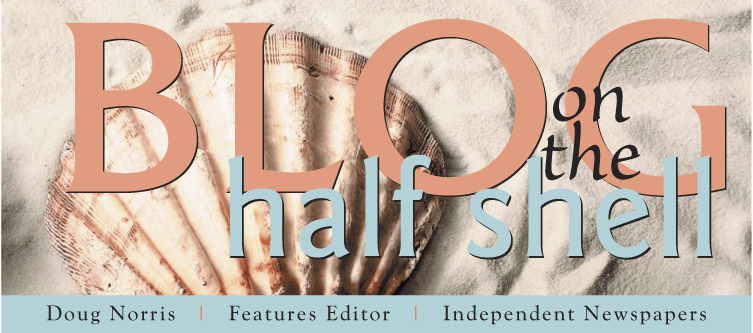But that’s not the only dirt we’ve got on Rhode Island [soiler alert]. Rhody is one of 54 states and territories to contribute soil samples to the Smithsonian Institution for an exhibition titled “Dig It! The Secrets of Soil.” The designated soil samples – called monoliths – are part of a gallery of dirt representing all 50 states, along with D.C., the Caribbean and the Pacific Islands. In the Nov. 2008 issue of Spade and Auger, the official newsletter of the Society of Soil Scientists of Southern New England, it is revealed that the Rhode Island monolith is composed of South County earth, described as “Narragansett soil,” collected in Exeter. So somewhere there is a hole in Exeter.
Can’t forget the Dirt Palace, a female art collective based in Providence that creates funky window displays and group exhibitions. From my review of “The Secret Rooms of the Dirt Palace” at Hera Gallery (Sept. 2007):
The carnival quality to the exhibition almost disguises one of the running themes – the subversion of female symbols and notions of femininity and domesticity. Toward this end, works are made using fabrics and yarn. The colors pink and red predominate. Mirrors are everywhere, as are conical shapes and triangles. There’s even a cookbook.
One tiny drawing shows two kittens clawing one another under the heading “Catfight.” A series of three black, vibrating pods shaped like breasts comprise Pierce’s “Maidens #2.” Goldberg’s “Secret Vanity” is a make-up send-up, a mixed-media beautification station of colored wigs and hairstyles accompanied by the advice to “Glom on the globs, pile on the pancake, trim your bangs, file your fangs.” Torsone’s twisted archetype, “The Secret Delivery Room Where We Give Birth to Kittens,” is a laugh-out-loud installation featuring a woman in gold (think the first victim in the James Bond movie, “Goldfinger”), wearing shades and a headband, legs open, giving birth to a litter of kittens on a spinning wheel. The deconstructed spinning wheel, an ancient icon of domesticity prominent in fairy tales, is given a surreal spin here. Gronner’s animal constructions convey a sense of folk tradition, echoing the art of indigenous people, while showing a modern flair. Two bear-like figures, “Secret Guardians of the Palace, stand upright on patrol. One has pink paws and wears a fox scalp on his forehead. The other’s white chest is adorned in medals made from clothing pins and washers. Her “Greeter,” a buff-colored camel’s head, is a parody of the moose-and-deer’s heads that project from the walls of hunters' households. It carries a colorful flag in its mouth, showing a rabbit in a triangular design with floral touches, a scene reminiscent of banners hanging from the contratas of Siena. Kent’s “Consumption Cavity” (made from paint, wire, fabric, wood, air, food, paper and garbage) turns an interactive toy into a carnival meditation on wasting time and matter. It’s merely part of an organic blob of a show in which everything is art, even the walk-out-the-door, “Please Take a Gift” gift basket, constructed by Zornova, offering a collection of – what else? – Gummy Worms.
And, finally, the DIRT Club is Rhode Island’s only metal detecting and treasure hunting club, better known as DiscoveRIn Rhode Island Treasures. The group holds its winter meetings at Cross’ Mills Library in Charlestown and devotes the rest of the year to looking for treasure. While the black sands of Block Island made detecting difficult, a recent outing produced a number of fishing weights and an antique silver ring. So far DIRT has come up empty in finding any of the pirate treasure supposedly buried in Rhode Island, including the legendary stash of Capt. Kidd, which was reportedly hidden variously on Block Island, Conanicut Island (Jamestown), Patience Island and Hog Island.
This week’s question: What’s the strangest thing you’ve found in (or on) the ground in Rhode Island?


No comments:
Post a Comment